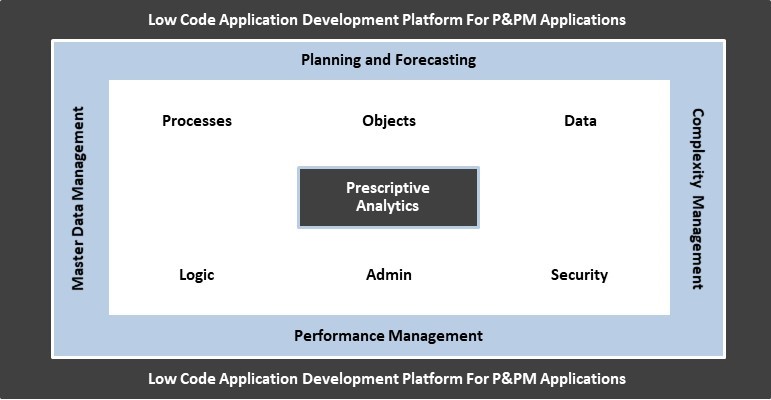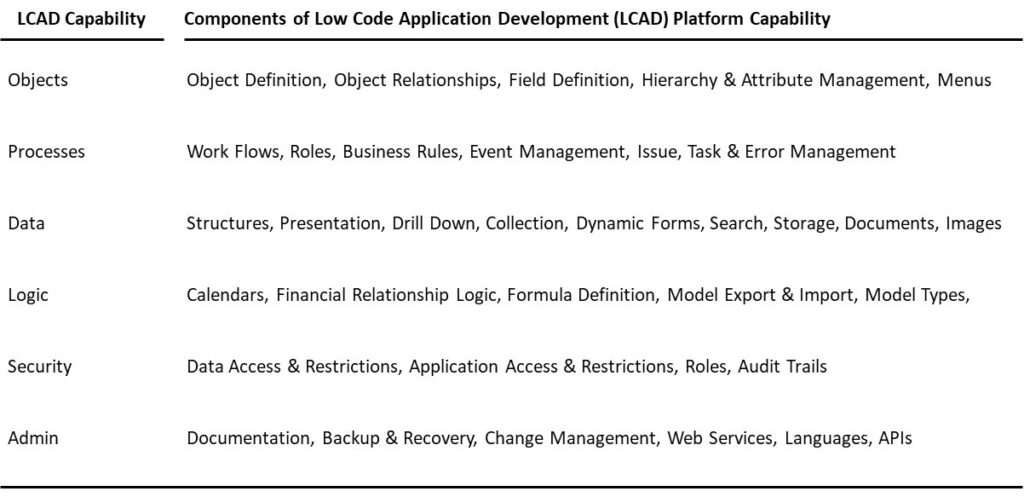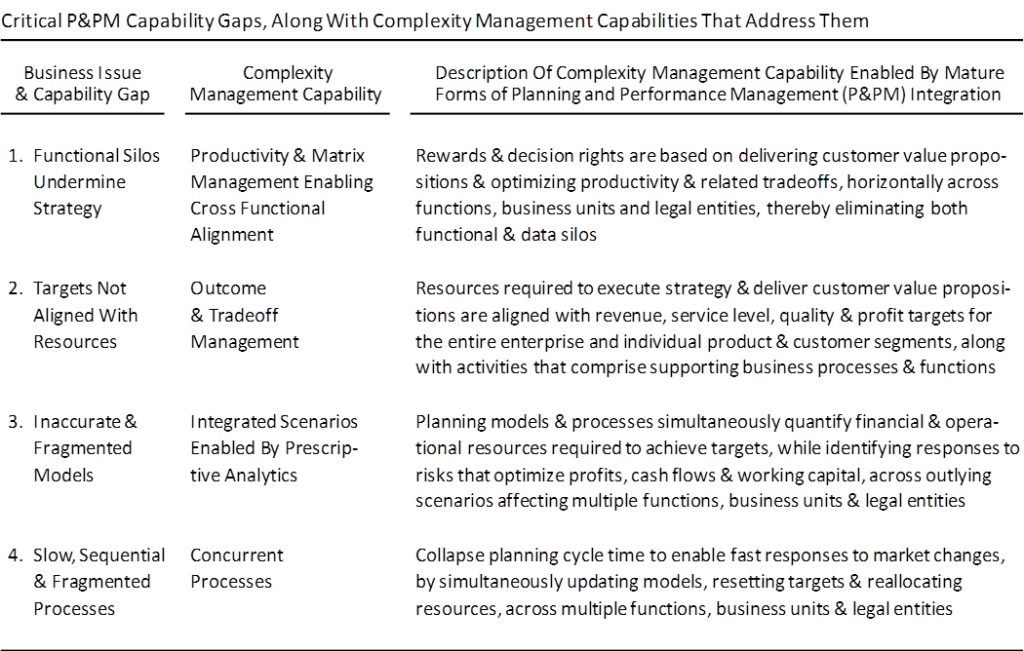Our solutions are supported by a “low code application development” (LCAD) platform. It has capabilities that provide the means to integrate prescriptive analytics software into strategic, financial and operational planning and performance management (P&PM) processes. The P&PM platform is illustrated below.

LCAD platforms enable step change improvements in P&PM processes. They enable integrated processes and richer functionality that can be quickly tailored to the unique needs of global manufacturers. The following aspects of the P&PM platform are described in the material provided below.
-
-
- LCAD Capabilities
- Prescriptive Analytics
- Complexity Management
- Master Data Management
-
LCAD Capabilities
LCAD platforms (or rapid-application development platforms) are tools that enable applications to be developed with minimal technical know-how. LCADs simplify the application building process, enabling organizations to create, iterate, and release applications in a fraction of the time it takes with traditional methods. These tools
LCAD platforms are traditionally used to automate transactional processes. They are not widely viewed as tools for developing applications for P&PM processes. However, the capabilities they support are essential for establishing mature forms of integrated P&PM processes. The following is a summary of the capabilities that enable our LCAD platform to support such processes.

Prescriptive Analytics
Prescriptive analytics is not new to the manufacturing sector. Supply chain optimization is a form of it that has been used for years. However, global manufacturers have not fully realized the full potential of these tools. While they have been effectively used in operations, the same is not true of financial P&PM processes. A number of issues have prevented manufacturers from making better use of these tools:
-
-
- Keeping models up to date
- Reconciling models to financials
- Maintaining attributes to drive the model
- Modeling the entire business, not just supply chain
- Reconciling high level and detailed operational models
-
One of the primary limitations of legacy supply chain optimization tools is that they are not always flexible. This can happen when presentation, model management and optimization components (of the solution) are “hard wired” together. Our P&PM platform separates these layers, thereby enabling a highly flexible solution that provides the means to:
-
-
- Explicitly connect supply chain models to those supporting cost, activity, profit and cash flow planning
- Distribute ownership of model parameters to front line managers, thereby enabling fast updates
- Maintain accuracy by embedding them into continuous financial and operational P&PM processes
- Audit the accuracy and completeness of models with user defined error messages
- Maintain different types of models Implement enterprise models over time
-
The last point is particularly important when it comes to implementation. Few organizations are capable of implementing (prescriptive analytics based) planning models based on all at once. They are usually implemented over time. Therefore, the ability to support different types of planning models within P&PM processes is essential.
Collectively, these capabilities enable step change improvements in the ability of finance and operations to establish processes that support connected decision making. Further details about our views about prescriptive analytics and the processes they support, can be found here.
Complexity Management
The purpose of planning and performance management (P&PM) processes are to align and balance strategic, financial, operational and commercial outcomes. In simple terms, this entails allocating resources to achieve (short and long term) revenue, profit and cash flow targets – for the enterprise as a whole and for the segments that comprise it. Complexity undermines the ability to maintain this connection between targets and resources. Our P&PM platform provides the means to address this complexity-driven capability gap by providing four incremental business capabilities, which are summarized below.

These four capabilities are described in more detail here. The key point here is that this P&PM platform has been specifically designed to address the complexities of manufacturers having global supply chains.
Master Data Management
Ineffective master data management (MDM) is one of the most common causes of immature P&PM processes. The P&PM platform features the following embedded MDM capabilities to avoid this problem:
-
-
- Data entry rules: Define rules for entering data into specific fields
- Event management: Identify events when MDM activities are required, like adding a new product
- Variances & Issues: Identify when variances are caused by inaccurate master data and create issue
- Attribute Management: Store and maintain attributes for planning specific data
- Planning hierarchies: Store and maintain planning-specific hierarchies
- Conversion tables: Maintain for product, customer and supplier numbers across multiple legal entities
- Mass changes: Enable mass changes to analytical master data based on defined attributes
- Reporting: Measure accuracy & completeness of master data accuracy by field, user and object
- Data ownership: Identify owners and administrators of master data by role
-

